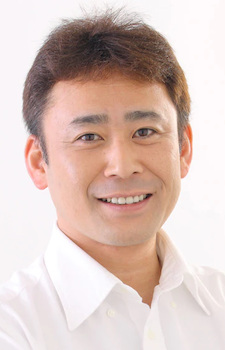
Shinsaku Takasugi (高杉 晋作)
Nicknames
Favorites
2
Animeography
About
Takasugi originated the revolutionary idea of auxiliary irregular militia (shotai). Under the feudal system, only the samurai class was allowed to own weapons. Takasugi promoted the recruitment of commoners into new, socially-mixed paramilitary units. In these units, neither recruitment nor promotion depended (at least in theory), on social status. Farmers, merchants, carpenters and even sumo-wrestlers and Buddhist priests were enlisted, although samurai still formed the majority in most of the ...
Takasugi originated the revolutionary idea of auxiliary irregular militia (shotai). Under the feudal system, only the samurai class was allowed to own weapons. Takasugi promoted the recruitment of commoners into new, socially-mixed paramilitary units. In these units, neither recruitment nor promotion depended (at least in theory), on social status. Farmers, merchants, carpenters and even sumo-wrestlers and Buddhist priests were enlisted, although samurai still formed the majority in most of the Shotai. Takasugi clearly saw that utilization of the financial wealth of the middle-class merchants and farmers could increase the military strength of the domain, without weakening its finances. Since the leaders of Chōshū were unable - and unwilling - to change the social structure of the domain, limited use of peasants and commoners enabled them to form a new type of military without disturbing the traditional society.
In 1863, Takasugi himself founded a special Shotai unit under his direct command called the Kiheitai, which consisted of 300 soldiers (about half of whom were samurai). Weakened by the punitive attack by the Western powers, Chōshū was unable to withstand an expedition mounted by the Bakufu in autumn 1864 in retaliation for previous Chōshū attempts to seize control of Kyoto. At first, conservative forces, which favored conciliation with the Bakufu in order to secure the domain, were dominant in Chōshū politics, and Takasugi and some of his compatriots had to leave the domain to avoid renewed imprisonment. Takasugi, with only about a dozen followers, including future political leaders Yamagata Aritomo, Itō Hirobumi and Inoue Kaoru, gathered in Kokura in Kyūshū and prepared an attack on the conservative forces in Chōshū. The subsequent Chōshū civil war began on 13 January 1865.
Takasugi played a major role in this civil war and his Kiheitai militia proved its superiority over old-fashioned samurai forces. With a series of quick strikes and the support of Kido Takayoshi, Takasugi achieved victory by March 1865. He became one of the main arbiters of the Chōshū domain's policy and continued to act as the domain's expert on Western military science, devoting his efforts to importing arms and raising troops. These reforms proved to be successful when Chōshū was victorious on four fronts against the Bakufu's Second Chōshū expedition in 1866, with the Kiheitai itself securing victory on two fronts. Takasugi’s efforts had made a small-scale ‘nation in arms’ out of Chōshū, giving it a military strength out of proportion to its relatively small size. With its victory over the Tokugawa forces, the military power of the Bakufu was discredited, and traditionally rival domains decided to join forces with Chōshū in the subsequent battles which led to the Meiji Restoration and the end of the Tokugawa Bakufu.




